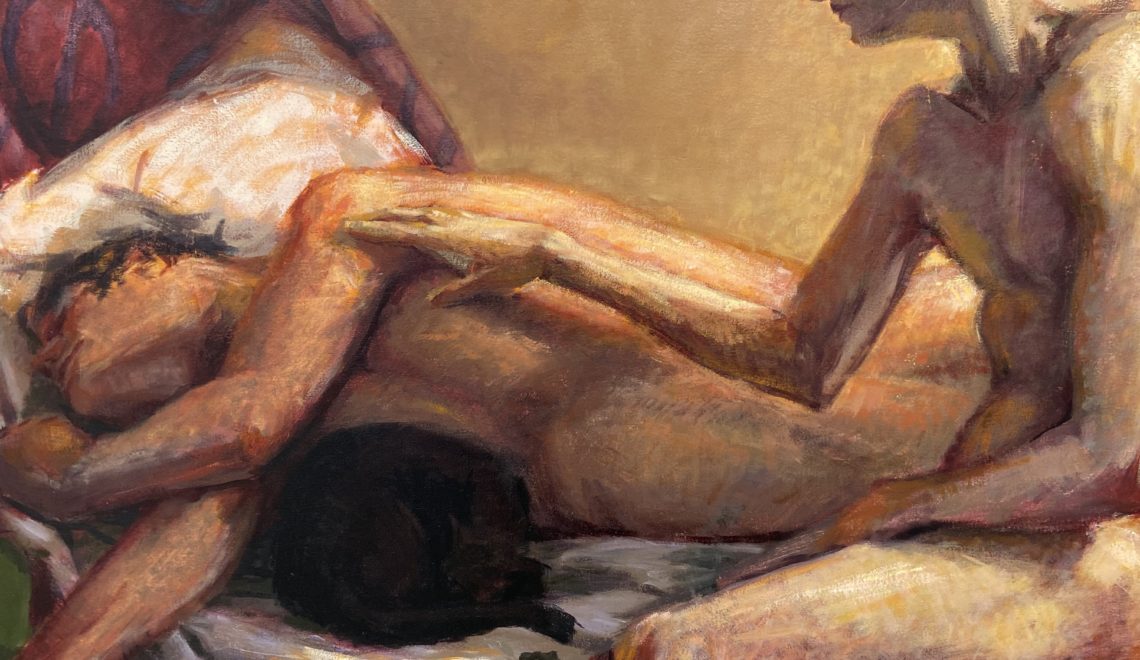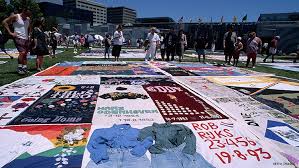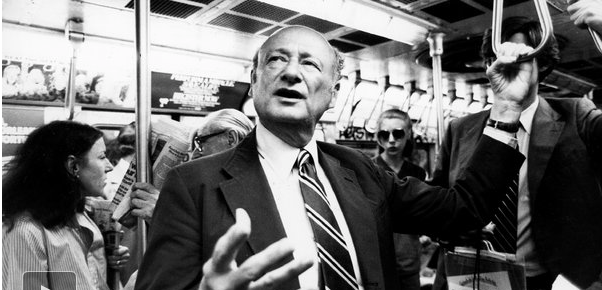On recent sleepless nights I’ve been haunted by an image of a person I’ve come to know well. The man has the face of a pugilist; tall and long-limbed, he stands with his hands behind his head wearing nothing but a pair of boots and a taunting, defiant stare.
This portrait of Frank O’Hara, by his one-time lover Larry Rivers, is the arguable centerpiece of the Brooklyn Museum’s remarkable Hide/Seek: Difference and Desire in American Portraiture, on view until February 14. I say arguable because O’Hara holds a special place. He’s a bit of a patron saint for that strata of gay men aspiring to embrace those adept expressions his poetry extolled: intelligence, sexuality, solitude, sass, private preoccupations and especially his observations of a New York that, despite its now-muted colors, continues to blaze as a mecca, a refuge, a home.
Hide/Seek is an abridgement of the show that struck new gay fear in conservative hearts when it opened at the Smithsonian a year or so back. It’s now touring: thanks to that institution and the show’s original curators David C. Ward and Jonathan D. Katz (the one hiccup: many of the works from DC aren’t there because the loans on them expired), O’Hara has come home. He’s brought some of his antecedents, peers and descendants to help us remember a time not so long along ago, when hiding was the norm, when everyone from artists and writers to businessman, adapted codes of communication that only their brethren could read. That angle feels a tad disingenuous, a moniker chosen to confer a validation—calling it “Talented Gay 20th Century Artists” probably wouldn’t do.
The work speaks for itself. Rivers’ isn’t the only image of Frank on display—there’s Wynn Chamberlain’s charming, telling diptych Poets Dressed/Poets Undressed, a class picture that includes Joe Brainard, Joe LeSuer and Frank Lima, and Alice Neel’s lovely oil rendering where she frames the writer with lilacs. Works by George Bellows, Thomas Eakins, Robert Mapplethorpe, Nan Goldin, Catherine Opie and Andrew Wyeth take the realism tact, but David Hockney, Robert Rauschenberg (in a lovely curatorial flourish—you’ll do a lot of reading at this show, and be happy you did—we’re reminded that in the Dantian hell depicted in his Canto XIV (1959), sodomites were forced to walk on hot coals), Marsden Hartley, Glenn Ligon, Keith Haring and Felix-Gonzalez-Torres (these last two with AIDS-era works that still ooze with heart-stopping pain juxtaposed as they are with AA Bronson’s portrait of his near-dead lover Felix. Warning—Bronson’s work still holds the power to draw tears on sight) skew their “portraiture. ” Theirs are complex stories of love and sex, cultural marginalization, tragedy and rage, told through abstractions that resonate as deeply as those traditional modes of painting and photography.
To walk the aisles of this exhibition means absorbing a beauty that transcends what’s actually on the walls. These days it seems, everything is post-gay, meaning odds are, most of the under-30 crowd has never heard of The Boys in the Band, or seen a AIDS-riddled patient expire before their eyes. They never knew what it was like to be in the closet at work, or suffer humiliating persecutions. No doubt some of the young men in attendance had never heard the names of the visual authors adorning those walls but the day I saw it, Hide/Seek resounded with those clicks of recognition that occur when one finds that friend of Dorothy who, long ago, walked on hot coals so that we could simply be. Ugh. I’ve nothing against Dorothy Gale or ruby red slippers, but isn’t it time we retired that phrase? In tribute to O’Hara (and another icon named Sondheim) call me a friend of Frank.













